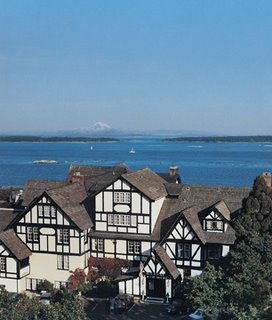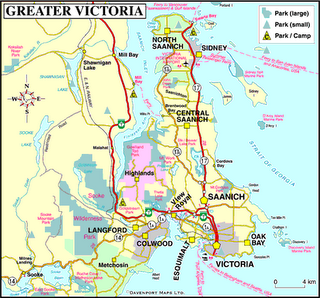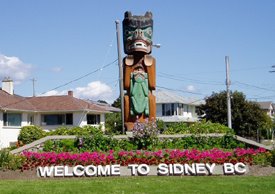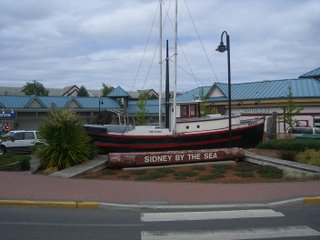Behind The Tweed Curtain
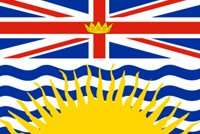
Reference to the map on the pervious post will show the area covered by a mysterious and little-known cloaking device known as The Tweed Curtain. It drapes across the
Safe behind The Tweed Curtain that conceals it from prying eyes, an alie n culture thrives in the warm
n culture thrives in the warm
A visitor stumbling across the area would find many familiar things to all North Americans such as MacDonald's restaurants, the ubiquitous strip malls and the usual profusion of Tim Horton's doughnut shops, (although the Starbucks - Satan is quite dominate here), but there are also a number of things that are not common. I always thought that Victoria's Secret had to do with skimpy women's underwear, but not so.
One of the first things I noticed on arriving was a sign at the side of a road that proclaimed "Concealed Interchange". Examining this closely, I eventually figured out that the sign was warning of what the rest of 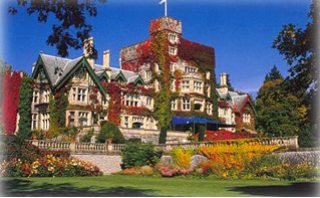
Instead, one hears such expressions such as, "Wot", "Gawd", "Cad", and I heard one older gentleman refer to another as a "bounder'. Even the bureaucracy appears to be in on this little Secret Society; the Drivers License is referred to as an Operators Permit, a Restaurant License is disguised as a Victualing Permit, and Round-Abouts are quite common here. There are even those who still count 14 April 1923 as a black day in the history of the area. That was the day that
d ended up causing some horrific crashes.
There is a profusion of specialty tea shops tucked away behind The Tweed Curtain, one of the most famous of which is Murchies, which occupies a large store in downtown
Within the ivy-cloaked brick walls of the Empress, for a mere $70, a perso
n can sample the elegant cucumber finger sa ndwiches, nibble the decadent tarts and sweets, and sip the high quality tea, while being served by a white-gloved server in a tuxedo. However, the locals sniff, they have very much debased the dollar. Where High Tea used to be served among the potted plants and little old ladies in big Wing Chairs in the lobby, as a sop to the hoards of tourists that now tramp the baroque tweed carpets of the Empress to gawk at the civility of it all, the Empress now serves what passes for High Tea on folding tables in the Conference Room at the back! Oh the agony of faded empire! Tea at the Empress is so crowded that nobody goes there anymore.
ndwiches, nibble the decadent tarts and sweets, and sip the high quality tea, while being served by a white-gloved server in a tuxedo. However, the locals sniff, they have very much debased the dollar. Where High Tea used to be served among the potted plants and little old ladies in big Wing Chairs in the lobby, as a sop to the hoards of tourists that now tramp the baroque tweed carpets of the Empress to gawk at the civility of it all, the Empress now serves what passes for High Tea on folding tables in the Conference Room at the back! Oh the agony of faded empire! Tea at the Empress is so crowded that nobody goes there anymore.
It is a world of hanging flower baskets, cricket and croquet games in the park, horse-drawn carriages, red-coated guards with black Busby caps, double-decker buses, and even the black English cabs that service the tourists who flock to the area. Most Canadians think of a club being somewhere you can buy things cheap, like bulk toilet paper or a years supply of toothpaste, but here The Club is an exclusive establishment, usually located downtown in a fine old mansion. There, the elite can socialize, dine, drink, (gin and lemonade in summer, martinis anytime), and congratulate themselves on being of a higher station than the mini-van rabble running the steets and generally ruining society with their crude language, ill-manners, tattoos, slovenly dressing habits and crass be
havior. One of the most prominent of these is the Union Club, which is 130 years old, and demands that its male members wear ties within its confines, or 'smart casual' at the very least, and even features a Ladies Night. [However, even some cherished institutions must adapt to the world rather than the other way around; the Union Club allows women to become full members). No tank-tops, loud slogans, commercial lettering, blue jeans, cutoffs, or runners allowed, thank you!
There are subtle signs of this secret society everywhere behind the Tweed Curtain; like you are riding an elevator, notice that someone behind you is softly humming a tune, and you then identify it as Rule Britannia! Or, over scones and tea your company tips you off that the price of Port is going to rise sharply because there was an outbreak of black leaf virus in
like HP & Worchester.
And, speaking of pubs, they have raised that culture to a higher level, backed by centuries of tradition back in The Old Country. The area pubs have quaint names like The Beaver, The Canoe Club, The Swan, The Snug, The Sticky Wicket, and The Penny Farthing. Within the usual dim-lit room with faux-Tutor trim that resembles your great-grandfathers cottage at
The town of  essed in Old English costume and standing on the steps of City Hall, loudly proclaims the official Day of Mourning for Indigent Slugs, or whatever else the town council has deemed significant to memorialize with a day of tribute).. (This I well know; I live only a half block from there and I can hear the bellowing from my back patio.)
essed in Old English costume and standing on the steps of City Hall, loudly proclaims the official Day of Mourning for Indigent Slugs, or whatever else the town council has deemed significant to memorialize with a day of tribute).. (This I well know; I live only a half block from there and I can hear the bellowing from my back patio.)
Local pubs include The Waddling Dog, Dickens, and The Blue Peter, (it is located on a wharf right next to the ocean and the locals tell me the winter winds there are fierce!). There is a specialty tea shop on the main drag, and even The Candyman, who specializes in old fashioned treats like Macintosh Toffee, candy sticks and Liquorace All-Sorts. Flower baskets are a common sight on our streets, there is a local Lawn Bowling Club, we have the latest fads in the competitive and fast-moving world of Smuf or Hobbit Lawn Kits, (or whatever else you thought might enhance the curb appeal of your trailer), and our bakeries have ample stocks of scones, english muffins, pigs-in-blankets, and raisin pudding. (left; the Waddling Dog Pub).
There is a Round-About on the road to the airport, so that all visitors can become suitably disoriented upon departure and arrival, the double-decker bus offers local service, and we even now have our very own horse and carriage waiting for hire at the
Yes, the Tweed Curtain can be a warm and comforting old sock for those cold and drizzly winter days. They say it is a slice of Home; an island of civilization out in the wild boonies of the untamed Colonies. Too bad not everyone appreciates the virtues of bygone days or even pauses to reflect on its passing. However, the Tweed Curtain protects the last vestiges of empire left in North America.
Pity!
Sited Along The Way:

- The horse and carriage awaiting customers in front of the Sidney Marina. Note the ubiquitous Hanging Flower Basket!
- Below: the Union Jack flying proudly over the Sidney Marina. If you enlarge the photo, (by double-clicking on it, you clot!), you might just be able to make out Mount Baker in the lower right hand side, just above the last bit of land, which
 is Washington State.
is Washington State.
- Below: the specialty Tea Shoppe in Sidney.

- Below; Town Criers cutting loose on the main street of Sidney. Looks to me like they are heading for the Rum Runner Pub for an urgent 'meeting' with two buddies of theirs - Ron Bacardi and Captain Morgan!

Douglas A.,
Out
